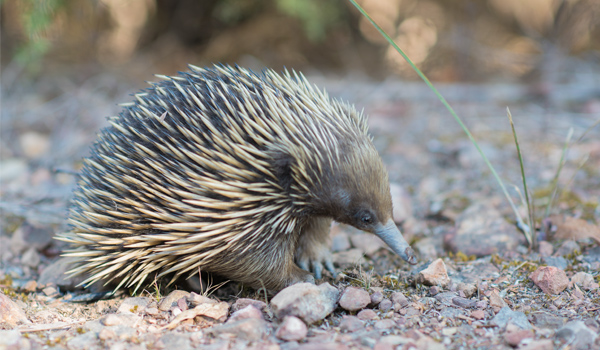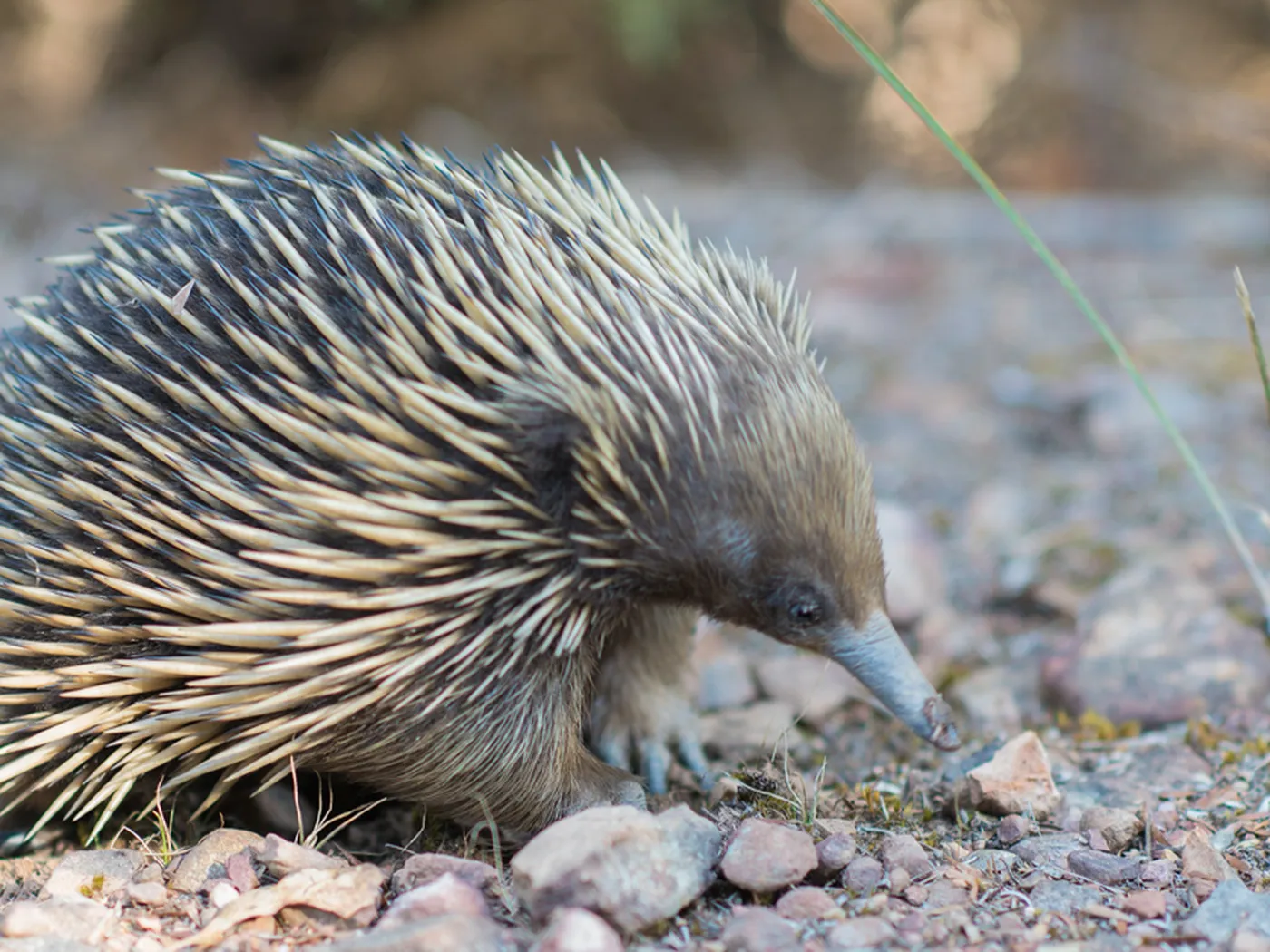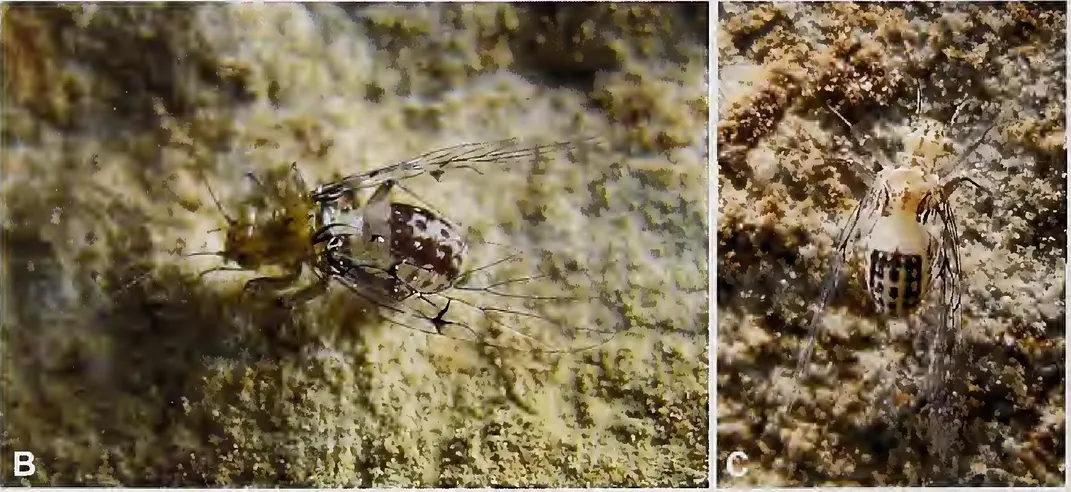Penis Shaped Dog Bone Penis Shaped Dog Bone Clip Art
Science |
Nine of the Weirdest Penises in the Animal Kingdom
A brusk listing of some of nature's virtually curious phalluses, from the echidna'due south four-headed unit to the dolphin's prehensile fellow member


Birds have them, bees have them, even regular old fleas have them, but in the animate being kingdom, no penis is exactly like the next. Beyond vastly dissimilar species and ecosystems, unique environmental pressures have immune creatures of many species to evolve an array of shapes and sizes—from the electric bluish penis of the leopard slug to the blue whale's ten-foot phallus.
The more than scientists acquire about penises, the more they realize how varied sexual practice organs are. Just ask Emily Willingham, a biologist and journalist who'southward been studying penises for over a decade. Her book, Phallacy: Life Lessons from the Animal Penis, hit shelves in September. Phallacy plunges readers into the wild and wacky earth of animal ballocks while exploring the social and cultural significance of penises as symbols of ability and identity.
Penises have been a longstanding discipline of scientific fascination, and they're far more studied than vaginas. Ane caption for this research gap, says Willingham, is "because of who has been asking the questions until quite recently, and who'south been deciding how those questions should be answered."
Typically, a penis helps male animals reproduce sexually with a female—notwithstanding, exceptions exist. Gender and sexual practice rarely fit into tidy categories and animal penises are no different. Many of the creatures packing the most surprising phalluses are hermaphrodites, meaning they also have female reproductive organs.
"There's not a binary that is categorically one matter or the other when it comes to genitalia," says Willingham.
These blurred lines often requite rising to nature's most fascinating sexual organs. Here are eight penises that are as cool and surprising as the creatures that wield them:
Heads To a higher place the Rest
/https://tf-cmsv2-smithsonianmag-media.s3.amazonaws.com/filer/ee/eb/eeeb10a5-e0f5-4c52-9686-73605c262773/echidna-3288632.jpg)
Sometimes one only isn't enough. Or so it seems for the echidna, a spiny egg-laying mammal, which has evolved a four-headed penis. During copulation, echidna penises operate on a part-time schedule: one-half the penis temporarily shuts down while the other 2 heads are responsible for fertilization. Merely those extra ii heads aren't there merely to testify off. Next time the echidna mates, he'll alternate which one-half he uses.
By shutting downward half of their penis at a time, male person echidnas fit perfectly with the female's two-branched reproductive tract. This creature'south coat of quills don't spare its genitalia, which features penile spines—a horrifying frequent trait in the brute kingdom (fifty-fifty humans one time had them) which may increase fertilization success or trigger ovulation.
Getting Handsy
/https://tf-cmsv2-smithsonianmag-media.s3.amazonaws.com/filer/be/1c/be1c8578-9830-4e84-be45-adf25db6fffc/social-media-dolphin.jpg)
Dolphins are known for their intelligence, promiscuity and absurdly dexterous penises. They take a prehensile penis, meaning it tin can hinge, grab and grope, much like a human being paw. A prehensile penis helps males navigate the complex, labyrinth-like reproductive tracts of female person dolphins.
Dolphins don't just use their penises for baby-making, either. Bottlenose dolphins oft copulate for pleasure, and often with members of the same sexual activity. Dolphin sex doesn't concluding long, but about ten seconds, just males can ejaculate multiple times an hour.
Fencing With a Phallus
/https://tf-cmsv2-smithsonianmag-media.s3.amazonaws.com/filer/6f/ce/6fced2ac-9112-4885-8226-0a21b81e4f56/pseudobiceros_hancockanus.jpg)
En garde! Many animals utilise their penises for dearest, only flatworms also use theirs to fight.
Similar many organisms with intriguing phalluses, flatworms that appoint in penis fights are hermaphrodites—just i example that showcases how a sex binary system fails to account for the range, fluidity and diversity of many organisms. Some species of flatworm engage in this duel to see who can inseminate the other.
Their ii-headed penises resemble tiny swords, and battles can terminal for up to an hour as they take turns attempting to stab the other. The winner pierces the flesh of the other flatworm to eolith their sperm, something scientists refer to equally "traumatic insemination."
Mating tin can exist competitive, with a single flatworm fertilizing another. In other cases, similar with the tiger flatworm, they tin can play both roles: each flatworm gives and receives sperm from its partner.
Whale How-do-you-do At that place!
/https://tf-cmsv2-smithsonianmag-media.s3.amazonaws.com/filer/71/07/71074611-6426-4557-845c-3142b1811acc/5187320081_2920d7f68a_o.jpg)
Blue whales are the largest brute to ever roam the earth, and they certainly have the phallus to match. Blue whale penises range between eight and ten feet, with a foot-long diameter. Each of its testes along tin can weigh upward to 150 pounds and tin can ejaculate gallons of sperm in a single become.
Whale penises are so famously oversized that in Moby Dick, Herman Melville suggests using the peel of a sperm whale's phallus as a floor-length frock to stay tidy while skinning the rest of the whale. We'll have to take Melville'south word on that 1.
E'er Inside Reach
/https://tf-cmsv2-smithsonianmag-media.s3.amazonaws.com/filer/ec/30/ec308e02-b8b5-4917-a01c-6c3be818e9eb/mussels-419050.jpg)
The blue whale might have the earth's biggest penis, but size is relative. Barnacles have the biggest penis-to-trunk size ratio, with genitalia nigh 8-times their total torso length.
Barnacles are stuck in identify for life, and then they use their super-long penises to accomplish other nearby crustaceans, blindly depositing sperm inside their neighbors. Similar flatworms, barnacles are hermaphrodites that can fertilize others, be fertilized or both.
Scientists accept plant that barnacle penis features change based on where they live. Those in rougher waters have shorter, stouter penises, while those in calmer areas have long, slender penises.
If humans had the aforementioned penis-to-body-sized ratio every bit barnacles, our penises would be equally long as a humpback whale, and so about 50 feet in length, says Willingham.
Armored and Amorous
/https://tf-cmsv2-smithsonianmag-media.s3.amazonaws.com/filer/6f/28/6f2845a9-60a8-4aea-a2ca-ffaf6181d178/adult_bed_bug_cimex_lectularius.jpg)
Bed bugs are famous for their aggressive, stabbing sex. Sometimes, overzealous males kill females with their saber-like penis in the process.
Willingham explains that this violent procedure has caused bedbugs to evolve "something very vagina-similar where they tend to get stabbed." This special less-armored area of their abdomen might minimize harm as the male injects his sperm into the female'south circulatory system.
Gender-Bending Genitals

Not much shocks Willingham about beast penises anymore, but she says she was surprised to larn about a microscopic, eyeless cave insect, which upends how scientists understand sex.
Males of the species have a vagina-like pouch containing sperm, while females have a special penis-like organ that penetrates and vacuums up sperm from the male.
Unlike other species that use a similar procedure—butterflies, mites, beetles—males of these species don't accept a similar penetrative organ, only the females practice, says Willingham.
A Temporary Tool
/https://tf-cmsv2-smithsonianmag-media.s3.amazonaws.com/filer/ad/ea/adea317e-f846-4a80-aff2-c953662bb00a/1600px-sea_slug_chromodoris_reticulata_7963729296.jpg)
Meet Chromodoris reticulata, a blazon of sea slug, that has to reckon with a scary reality: sex means saying goodbye to their penis. At least, for the twenty-four hour period.
Chromodoris reticulata are hermaphrodites and fertilize each other simultaneously during sex. Each has a three-centimeter-long schlong, but they only extend a centimeter of their penis when copulating. After sex, they shed their single-use penis into the ocean's abyss. But this loss doesn't hateful their sex life is over: they have at least two more disposable penis segments hidden away. Every bit soon as 24 hours later, the slug will be back in action.
How'southward Information technology Hanging?
/https://tf-cmsv2-smithsonianmag-media.s3.amazonaws.com/filer/ca/a4/caa46299-8fa7-440f-9da2-87f0eca55f0a/snail-1524637.jpg)
Sometimes, penises pose logistical challenges. That is certainly the case for the leopard slug, which is so well-endowed that information technology has to go to extreme measures to reproduce.
Mating leopard slugs dangle from branches by a shared rope of their ain slime with their penises hanging beneath. As hermaphrodites, these slugs inseminate each other during sex then, once the activity starts, two penises are on display. And their penises are easily spotted: They're electric blueish and roughly the size of the slugs themselves.
"You lot just need to go wait that one up," says Willingham. You lot tin see a video of the slugs in action hither.
The act is a messy tangle, but nothing goes to waste matter. Once copulation is complete, one partner slurps downwardly the slimy sex rope as a post-coitus snack.
Source: https://www.smithsonianmag.com/science-nature/nine-weirdest-penises-animal-kingdom-180976274/
0 Response to "Penis Shaped Dog Bone Penis Shaped Dog Bone Clip Art"
Postar um comentário